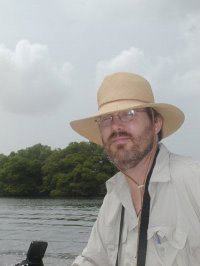Dr. John A. Gamon

Dr. John A. Gamon
Professor, Co-Director, CALMIT, School of Natural Resources, University of Nebraska – Lincoln
307 Hardin Hall
402-472-7529
About John Gamon
Dr. John Gamon studies the “breathing of the planet” – the exchanges of carbon and water vapour between the biosphere and the atmosphere that affect ecosystem productivity and help regulate our atmosphere and climate. Of particular interest are the effects of disturbance (fires, succession, weather events and climate change) on these basic processes. Additional research questions involve the detection of plant physiology, ecosystem function, species composition, and biodiversity using non-contact sampling methods. Much of this work is done with optical monitoring (remote sensing and automated field methods), and entails the development of new monitoring methods and related informatics tools.
To encourage wider usage of these methods, Dr. Gamon co-founded SpecNet, (Spectral Network), a network of collaborating sites and investigators using optical sampling methods (particularly spectral reflectance) to study ecological questions. Dr. Gamon conducts fieldwork in a range of ecosystems from the Arctic to the Tropics.
Research areas
- Disturbance effects on ecosystem function
- Climate change impacts in northern latitude ecosystems
- Remote sensing for sampling terrestrial ecosystem composition and function
- Remote sensing of biodiversity
- Detecting plant biochemical responses with non-contact optical methods
- Plant ecophysiology, particularly related to photosynthesis and environmental stress
- Eco-informatics and Cyberinfrastructure for ecosystem monitoring
Current Lab Projects
- “Evaluating growing season length and productivity across the ABoVE Domain using novel satellite indices and a ground sensor network” (ABoVE Program, NASA, USA)
- “Quantifiying the carbon balance of Mattheis Ranch” (Rangeland Research Institute, U. Alberta).
- “Imaging Spectrometry & Cyberinfrastructure for Biospheric Carbon Monitoring” (AITF).
- “Linking remotely sensed optical diversity to genetic, phylogenetic and functional diversity to predict ecosystem processes.” (Collaborative Research, US NSF & NASA).
- “Ecological Spectral Information System (ESIS): Integration of Spectral Data with Measurements of Vegetation Functional Traits” (Collaborative Research, NASA).